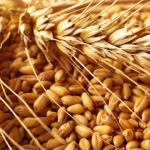The garden form of hazel is hazelnut. The plant grows well in any soil, and its fruits are much larger than hazels. The bush reaches a height of 3 meters, the root system is powerful, and the harvest is large.
Features of planting hazel in autumn
It is recommended to place hazelnut seedlings based on the following planting patterns: 6x6, 5x6, 4x6 and 4x5 m. The more space you allocate for the plant, the more powerful it will grow and the greater the harvest. There is also a nesting method of planting. At the same time, up to 6 plants are placed on a circle of one and a half meters, using a planting pattern of 6x6 meters. The root shoots are removed so that the bush grows into one trunk.
If we talk about preparing the soil, it is necessary to loosen it before planting. If potassium and phosphorus levels are low, you need to add fertilizer. Nitrogen is introduced as a top dressing during the growing season. It is also worth plowing the soil and breaking it down for planting. Hazelnut seedlings are buried 60 centimeters. In order for the roots to develop well, add several buckets of humus or fertile soil. At the same time, the nut will begin to bear fruit much earlier.

How to properly care for and grow; when to replant (photo)
Care is no different from caring for other crops. The soil near the tree trunks is loosened, but you should not touch the roots. The nut is watered several times a season to increase yield.
Watering is required mainly in June-July. Fertilizers also play a significant role; fruiting also depends on them. The best option is compost and manure, they are applied 2 times a year. Mineral fertilizing is applied every year. During fruit set, fertilizing with urea is carried out.
Any hazelnut varieties increase their yield gradually, from the 3rd year of life. A bucket of nuts from one bush can only be obtained from the 15th year of life.

The fruits ripen from the end of August. They are collected after they acquire a light brown color. The nuts are then dried and stored in a well-ventilated room.
How a bush is formed by pruning
Proper formation of the bush helps to get a good harvest. In the first years, the underground part of the plant develops better than the aboveground part. After 3 years, active growth of shoots begins. Crown trunks are formed from them. Those branches that are to be removed are cut right at the base of the bush.
Growing hazelnuts involves removing excess growth from the bush throughout its life. In this case, young branches are left, and unproductive stems are eliminated.
Starting from the 11th year, the bush is rejuvenated, 3 old trunks are removed, and new shoots are shortened. The presented actions should be carried out before the leaves bloom.

Feeding, watering and other care
Hazelnut seedlings have a delicate root system. Therefore, if you loosen tree trunk circles, you should act carefully so as not to touch them. It is better to use mulching with mowed grass. Worms develop well under it, which makes the soil more fertile. Adding ash to the soil helps improve productivity.
Growing nuts involves watering. It is also necessary to add humus - 2 buckets per year per plant. In the summer, fertilizing is done with ash, in the spring with ammonium sulfate and ammonium nitrate.
Nut propagation
Different varieties of hazelnuts are propagated in different ways.
Dividing the bush
The easiest way, all the characteristics of the variety are preserved. The pre-dug plant is divided into parts so that 15-centimeter stumps are obtained. In this case, roots and soil should remain on the parts.

Reproduction by arch
In this case, annual shoots are rooted, but not separated from the plant. You can’t take older cuttings; they won’t take root. When propagating by arches, holes are dug with a depth of 15 cm, their length should be about 40 cm. The shoots are placed in the grooves and secured with wooden hooks. The upper part of the layers is tied to pegs. In the place where the bend is located, a cut is made and pollinated using the root. Next, the grooves are sprinkled with soil and watered. This compacts the soil. One shoot will produce only one rooted layer.
Horizontal layering
A labor-intensive but effective method. One shoot can produce up to 5 layerings. Laying goes horizontally into the grooves. The layers are pinned down, but not covered with soil. Shoots grow vertically from vegetative shoots and are then mulched. During the summer period, the layerings are covered with earth several times.
Among other things, watering is carried out. As a result, mounds appear above the layering. The growth is shortened to 50 cm in order to enhance root formation. The following year, horizontal layers are dug up and divided into parts.
Vertical layers
Excellent results are obtained by rejuvenating the entire bush. Juvenile shoots are obtained from dormant buds of the root zone. During the hilling process, leaves are removed from the bottom of the shoots. In autumn, part of the rooted shoots is cut out. As the shoot grows, constriction occurs. As a result, it takes root and by autumn reaches 1 meter in height. At the point of constriction, the shoot is broken off using wire.

Seeds
When sowing seeds, different offspring are produced that are not similar to the mother plant. Such propagation is used for breeding purposes. The presented method makes it possible to obtain new and improved varieties. The nuts selected are well developed and large. They are first stratified. When planting in spring, the beds must be mulched with dry leaves.
Cuttings
After 5 years, the ability to root cuttings approaches one hundred percent. In this case, first one third of the cuttings take root, and then two thirds from that.
Rhizomatous shoots
In gardening, coppice propagation is actively used. The lower part of the bush retains the ability to regenerate for a long time, which is very important. Walnut bushes grow in a circle using rhizomes. Hazelnut shoots form in the 3rd year. For propagation, 2-3 year old shoots are used, which are separated with an ax. They are called tear-offs. When transplanting shoots, cuts are made to ensure better survival.

Graft
Reproduction by grafting is difficult to achieve. Bear nuts and hazel seedlings are often used for this purpose. Vaccination is carried out in early spring. It is tied and a garden varnish is applied. A special cap made of polyvinyl chloride film is also installed. After buds form on the cuttings, the cap is opened, waited for two weeks and removed completely. After the graft has grown together, all shoots from the rootstock are removed.
Diseases and pests
Hazelnuts are preferred by animals such as wild boars, squirrels, woodpeckers, mouse-like rodents, and nuts. Almost all walnut bushes are sooner or later exposed to diseases and pests. The main pests are caterpillars, butterflies, beetles, hares, and weevils.
Walnut weevils and longhorned beetles pose a great danger. They fight it in the following way: they dig up the soil, remove the wormy nuts, shake off the insects onto a film and treat them with pesticides. In the second half of summer, powdery mildew may appear. Affected leaves must be collected and sprayed with a lime-sulfur decoction. Treatment with colloidal sulfur is also carried out.
Hazelnuts, the benefits of which are beyond doubt, are an unpretentious plant in terms of planting and care. It is propagated in various ways - by cuttings, rhizomes, layering, etc. The harvest is large, but it is necessary to protect the bush from diseases and pests.
Growing hazelnuts (video)
Reviews and comments
(3
ratings, average: 4,17
out of 5)
Nina 10/28/2015
Hazelnut is a beautiful and useful plant. We have it lined with the southern side of our summer cottage. When the shoots were planted several years ago, they took a long time to take root, it was difficult, and then they grew poorly. But thanks to our careful care and patience, the bush now produces a pretty good harvest.
Olga 10.29.2015
Last year, my husband's sister brought us a hazelnut sprout. But somehow it grows very poorly here... Moreover, we had to replant it again this year. I don’t know when we will eat our nuts, I love them very much! Let's see how it overwinters, I hope that it will begin to grow and bear fruit, at least in three years.
Yuri 11/22/2015
In the video they say a seedling, but they plant a seedling.
Sergey 03/25/2016
I don’t know how many times I planted hazelnuts, I still couldn’t grow them. Either it dries up or does not bear fruit. Who has already grown and given birth to hazelnuts, write how you did it. I will be very grateful. The product is very useful, but it is impossible to grow it.
Goshia 03/25/2016
With such a low yield, you can plant 2 - 3 hazel bushes on a small plot of land. To have such nuts. In my opinion, the easiest way to obtain seedlings is layering. Caring for the plant is not difficult; regular pruning is necessary to obtain a consistently good harvest.
Yuri 03/26/2016
First of all, you need to find hazel or hazelnut cuttings, water more often, and mulch, since the root system is superficial. It takes 2 years for rooting; remove the ovaries. For a stable harvest, it is necessary to plant several specimens of different varieties of hazel, hazelnut or bear nut.
There's no point in replanting, plant anywhere as long as it's in the sun. Plant more, look for layering. My two-year-old cuttings bloom and set fruit.
Sveta 03/28/2016
In the schoolyard in our village there is a very large hazel bush (hazelnut). People are constantly giving birth there, everyone who is not too lazy goes and collects healthy nuts. And at home, in my garden, I tried to plant a shoot - it didn’t take root, I don’t know why! Maybe I’m doing something wrong, but I’ll try, I really want to grow hazel!
Nurlan 05/19/2016
I waited 13 years and it finally bloomed this year.
Alice 03/23/2017
Hello!
I can't find the answer to my question anywhere. I want to transplant the hazelnuts to another place, they are 2-4 years old (I don’t know exactly), but the height is 3 meters, they produced well last year for the first time, and the previous year there were no nuts. When (is it possible in the spring?) it can be replanted, what is the best way to do it (special soil, depth of the hole, etc.)? Please answer and give advice or links to relevant sites. I would appreciate that. Last year I didn’t have time to collect the nuts - people walking past my house or neighbors collected the nuts for me (the hazelnuts are located in front of the house, why they were planted there - I need to find out from the previous owners).
Yuri 03/24/2017
There is no need to replant, make layering and plant in another place.
Add a commentamong many peoples it is considered a mysterious tree, surrounded by legends, traditions and superstitions And. For example, the Slavs considered this plant pure and sacred, so during a thunderstorm they hid under it, tucked the branches into their belts and applied them to the place they wanted to protect from lightning. What is really remarkable about this tree and how to grow it at home, we will tell you below.
Hazel (Hazelnut): description of hazel
Hazel or hazel - This is a deciduous tree (shrub) of the Birch family, growing up to 10 meters. It has an ovoid, flat or spherical crown. The bark of the tree is gray-brown, dissected with transverse stripes. The root system is powerful and superficial. The leaves of the hazel tree are matte, dark green, pointed, rounded, ovate.
Did you know? Popularly, hazel is called hazel or hazel, but hazelnut, which is common in cultivation, is a completely different plant. Hazelnuts and hazel-related trees, representatives of the same family.

Hazelnuts (or, as they are also called, “hazelnuts”) begin to bloom in early spring (March-April), even before the leaves bloom. During this period, golden earrings appear on the tree. Since hazel is a monoecious plant, both catkins and pistillate flowers are located on the same tree or bush. The hazel flower consists of bifurcated stamens. The hazel tree begins to bear fruit in the seventh or eighth year of life and produces a harvest every year. The fruits are small (2 cm), represented by oval or spherical nuts enclosed in a light green plus. Each inflorescence can contain up to 30 fruits, although 3-4 are usually found. Ripen in August. The hazel tree propagates by layering, seeds or root suckers.
Today, more than 100 varieties of hazelnuts are known, the most popular of which is Panaches. Its fruits have a pleasant taste and are characterized by a high fat content (62-65%). Moreover, this variety produces a bountiful harvest every year and does not require pollination.
Hazel lives in broad-leaved, coniferous and mixed forests, and in those places where common hazel grows, it forms dense thickets, growing intensively in clearings and pastures. Widely distributed in the Caucasus, Middle East and Europe. It prefers fresh, fertile and moist soil, therefore, it is usually found at the bottom of ravines, along rivers, streams, in the steppe and forest-steppe. It practically does not grow on poor, swampy, acidic, peaty soils.
However, tasty and healthy nuts can be tasted not only in forests - this tree has long been cultivated. It is quite possible to obtain a hazel harvest from your garden plots if you know the intricacies of caring for and growing this plant.
Where is the best place to plant hazel?
 The varieties of the described plant are various forms and interspecific hybrids of common, Pontian, multi-leaved and large hazel. The northeastern, eastern, and northern parts of low slopes are preferred for cultivation, since it is in these places that fluctuations in daily temperatures are less, and therefore the risk of burns and freezing is lower.
The varieties of the described plant are various forms and interspecific hybrids of common, Pontian, multi-leaved and large hazel. The northeastern, eastern, and northern parts of low slopes are preferred for cultivation, since it is in these places that fluctuations in daily temperatures are less, and therefore the risk of burns and freezing is lower.
Did you know? Hazelnut kernels contain up to 60% fat, 18% protein, vitamins, macro- and microelements, and due to their original taste, they are widely used in the food industry.
Choosing a landing site: what should the lighting be like?
Hazel-T It is not a hardy tree and does not like direct sunlight, but with strong darkness it can produce a poor harvest, and its leaves change color. The place where hazel will grow should not be subject to floods.
Choose an area in your garden that is free, moderately lit and protected from drafts. In addition, groundwater in the place where hazelnuts are planned to be planted should not be higher than 1.5 meters.  The ideal place to plant the plant is near the walls of buildings. If there is none, then a hedge can serve as protection from the winds. Growing hazelnuts is permissible in the vicinity of trees with a voluminous crown, but they must be no closer than 4-5 meters from it. In this way, the optimal feeding area for the hazel tree will be maintained - 16-25 m².
The ideal place to plant the plant is near the walls of buildings. If there is none, then a hedge can serve as protection from the winds. Growing hazelnuts is permissible in the vicinity of trees with a voluminous crown, but they must be no closer than 4-5 meters from it. In this way, the optimal feeding area for the hazel tree will be maintained - 16-25 m².
Soil requirements
To grow a productive hazel tree on your site, it is better to select fertile, loose, well-drained, neutral or slightly acidic (pH 6-6.5) soil for planting. It is in such soil that hazelnuts quickly sprout from the roots, begin to bear fruit after 3-4 years, and the process of growing it does not create any unnecessary problems.
In chernozem soils, for better moisture and air permeability, it is recommended to add sand and compost humus. Hazel does not take root well on sandy, rocky and swampy soil, and acidic soil must first be limed (500 g per 1 m²).
Features of planting garden hazel
 To obtain a bountiful harvest, you must first draw a plan for planting hazelnuts, and you must take into account the fact that when planting several trees nearby, natural cross-pollination occurs. It is best to plant hazel along the boundaries of the site.
To obtain a bountiful harvest, you must first draw a plan for planting hazelnuts, and you must take into account the fact that when planting several trees nearby, natural cross-pollination occurs. It is best to plant hazel along the boundaries of the site.
Selection of seedlings
Hazel reproduces in several ways:
- Root shoots. Before transplanting into open ground, the sprouts are grown in a greenhouse for 1-2 years. At the same time, all the characteristics of the mother bush are preserved.
- Seeds. Planting the fruit (namely, it is the seed) of hazel is done in spring or autumn. The bush will begin to bear fruit in 5-6 years.
- By division. Branches are separated from an adult plant, which already have a root 15 centimeters in length. Each seedling is planted separately. Using this arrangement, you can thin out the hazel thickets.
- Cuttings. To do this, take the strongest shoots that are at least 1-2 years old.
- By layering. In the spring, the branches are bent to the ground, placed in grooves and lightly dug in.
- Vaccination. The procedure is carried out in the summer, and cuttings are prepared in the fall.
Good hazel seedlings (if you plan to grow it as a cultivated plant) should have at least 2-4 living branches 30-50 cm long and 1-1.5 cm thick, and the root system should be well branched.
Did you know? In terms of nutritional value, 400 g of hazel kernels are equivalent to the one-day diet of an adult.
Preparing the planting hole
 Hazelnuts should be planted in the fall. To begin with, dig holes 50-60 cm deep and 80 cm wide, fill them with humus or compost (10-15 kg), mineral fertilizers (superphosphate, potassium sulfate) and rich soil taken from under an adult hazel tree. The distance between the holes depends on the growth vigor of the variety. For example, for bush hazel you need at least 4 meters, for standard hazel - 1.5-2.5 meters. There is also nest planting, in which several seedlings are placed in a circle around a large (about 1 m) hole, maintaining a distance between seedlings of at least 50 cm. Subsequently, hazel and hazelnuts are grown in a standard form, although when planted in nests they generally look like big bush.
Hazelnuts should be planted in the fall. To begin with, dig holes 50-60 cm deep and 80 cm wide, fill them with humus or compost (10-15 kg), mineral fertilizers (superphosphate, potassium sulfate) and rich soil taken from under an adult hazel tree. The distance between the holes depends on the growth vigor of the variety. For example, for bush hazel you need at least 4 meters, for standard hazel - 1.5-2.5 meters. There is also nest planting, in which several seedlings are placed in a circle around a large (about 1 m) hole, maintaining a distance between seedlings of at least 50 cm. Subsequently, hazel and hazelnuts are grown in a standard form, although when planted in nests they generally look like big bush.
Important! Allergy sufferers need to remember that hazel pollen causes allergic reactions.
Planting hazel in the garden
Before direct planting, the roots of the seedlings are cut to 20-25 cm, moistened with a mixture of manure and clay, and then placed in prepared (no later than 2 weeks before planting) holes, at a distance of 4-5 meters from each other (if want to create a hedge). Green spaces must be watered abundantly (2 buckets for each seedling). After this, the tree trunk circles are mulched with a 3-5 cm layer of peat or humus, and the branches are shortened to 20-25 cm.
The level of the root collar should be deepened by 2-3 cm and not covered with soil, which will stimulate the growth and branching of roots. The soil needs to be compacted only in the root zone. Since hazel needs cross-pollination, the bushes should be placed nearby, and it is better if they are of different varieties. The first time after planting hazelnuts, the free space between the plants can be used for vegetable crops.
Did you know? Hazel bark has anti-inflammatory, antiseptic, astringent properties. A tincture of it helps with varicose veins, thrombophlebitis, prostate diseases, vitamin deficiency, malaria, hypertension, and rickets.
All about hazelnut care
Usually, caring for young trees and bushes comes down to loosening the tree trunks and mulching them, but for hazelnuts there is a special growing technology.
Watering and soil care
 Young seedlings should begin to be watered within a week after planting. After 2-3 abundant waterings, the soil capillaries will connect, the planting ball will not separate from the rest of the soil and will retain its moist state, providing the seedling with the necessary elements for the next 3-4 years. If the year is dry, hazel needs additional watering. Do not skimp on water - the bushes need to be watered at least once a month. Remembering how hazel and hazel grow and reproduce in natural conditions, one must take into account that they are prone to excessive formation of root shoots, and, consequently, to a decrease in yield. Therefore, root suckers need to be destroyed at an early age, as soon as they begin to rise above the surface. For effective removal, dig up the soil around each sprout and cut the shoot down to the base. This procedure is carried out in early spring.
Young seedlings should begin to be watered within a week after planting. After 2-3 abundant waterings, the soil capillaries will connect, the planting ball will not separate from the rest of the soil and will retain its moist state, providing the seedling with the necessary elements for the next 3-4 years. If the year is dry, hazel needs additional watering. Do not skimp on water - the bushes need to be watered at least once a month. Remembering how hazel and hazel grow and reproduce in natural conditions, one must take into account that they are prone to excessive formation of root shoots, and, consequently, to a decrease in yield. Therefore, root suckers need to be destroyed at an early age, as soon as they begin to rise above the surface. For effective removal, dig up the soil around each sprout and cut the shoot down to the base. This procedure is carried out in early spring.
Top dressing
In order for hazelnuts to bear a good harvest, not only proper planting is important, but also certain care. In the fall, hazel is fed with phosphorus and potassium, and in the spring the bush will need ammonium nitrate. In addition, to ensure that all the fruits ripen at the same time, nitrogen fertilizers are used - fertilizing with them is carried out in July. It is good to feed fruiting and young plants in the fall using organic fertilizers (manure, compost, superphosphate, potassium salt) at the rate of 1 bucket per 1 m².
Important! Young seedlings need autumn mulching of the soil.
Pruning hazel in the garden
The hazelnut, which is planted and cared for in a summer cottage, is capable of producing basal shoots, just like its wild relative. In order to maintain productivity, you should not allow the branches inside the bush to thicken (when forming the crown, only 6-10 of the most viable shoots are left, not located too close to each other).
 As the bush grows, intertwined, damaged and dry branches are removed. Twenty-year-old plants are gradually replaced with young shoots, removing 2 “old people” per year.
As the bush grows, intertwined, damaged and dry branches are removed. Twenty-year-old plants are gradually replaced with young shoots, removing 2 “old people” per year.
Plant hazel, or hazel (lat. Corylus) belongs to the genus of deciduous shrubs or trees of the Birch family. There are about 20 species in the genus, native to Eurasia and North America and forming undergrowth in coniferous-deciduous forests. The most common cultivated species is common hazel, or hazelnut. Such cultivated hazel species as Pontic hazel, large hazel and common hazel are often called hazelnuts. Hazel is one of the oldest cultivated plants in Europe. For many centuries, hazel was grown in Turkey, Spain, Italy, France, Germany and even in the UK. In Russia, hazel fruits appeared in 1773 as a result of an exchange for leather and velvet. The name “hazel” comes from “leska” and means forest nut.
Planting and caring for hazel (in brief)
- Landing: in spring, before the start of sap flow, and in autumn, 2-3 weeks before a steady cold snap.
- Bloom: at the end of March or beginning of April.
- Lighting: bright light, direct or diffused, at a distance of at least 4-5 m from other trees.
- The soil: rich in humus, light, loose, with a slightly acidic or neutral reaction.
- Watering: the first watering is a week after planting. During the season, you need to carry out 5-6 waterings - approximately once a month, spending 6-8 buckets of water on each adult bush. In dry summers, you can water more often and more abundantly, and in the rainy season, you can not water at all.
- Feeding: in the spring, as soon as the buds swell, and in July, for the simultaneous ripening of the fruits, nitrogen fertilizer is added to the soil, and in the fall the hazel is fertilized with potassium and phosphorus. It is better to feed young animals with organic matter - every 2-3 years add 10 kg of compost or rotted manure under each bush.
- Reproduction: seeds, suckers, layering, cuttings, grafting and dividing the bush.
- Trimming: in the spring, at a late stage of flowering, to help the plant with pollination. Anti-aging pruning is carried out when the bush reaches eighteen years of age and its productivity decreases. Don't forget to cut out unnecessary root shoots.
- Pests: nut weevils, leaf beetles and longhorned beetles, as well as aphids and bud mites.
- Diseases: affected by rust, branch rot and powdery mildew.
Read more about growing hazel below.
Hazel or hazel - description
Hazel – tree or shrub
The hazel tree can reach 7 m in height. It has a spherical or ovoid crown with a cone-shaped top. The hazel leaves are large, broadly oval or round, with jagged edges. The flowers are unisexual and monoecious: male flowers develop in autumn and form dense cylindrical catkins on short branches. In spring they bloom even before the leaves appear. Female flowers form kidney-shaped inflorescences and are located two at a time in the axils of the bracts. Hazel blooms at the end of March or beginning of April and produces a huge amount of pollen, which is the main food for bees after wintering. Blooming hazel is decorated with flowers and golden earrings. The hazel fruit is a small (about 2 cm in diameter) spherical yellow-brown single-seeded nut, surrounded by an incised tubular integument (plush) and a woody pericarp. The nuts ripen in August.
Hazelnut prefers temperate and subtropical climates. Its plantations can be seen in southern Europe, Cyprus, Turkey, Georgia, Azerbaijan, Belarus, Ukraine and central Russia. Unfortunately, in amateur gardens, hazel cannot yet be found as often as other fruit shrubs - sea buckthorn, rose hips, hawthorn, actinidia and others.
Planting hazel in the garden
When to plant hazel
Hazel trees are planted both in the spring, before sap flow begins, and in the fall, 2-3 weeks before the onset of persistent cold weather, but autumn planting is preferable to spring planting. Where to plant hazel? Find a moderately lit area in your garden, protected from drafts, where groundwater lies no higher than one and a half meters from the surface, and it is better if this place is not far from the western or southern wall of the building. Do not plant hazel trees in places where melt water accumulates in the spring. The nearest large trees should be located at a distance of 4-5 m from the hazel, since the optimal feeding area for hazel is from 16 to 25 m². As for the composition of the soil, poor, heavy, loamy or marshy soils are not suitable for hazel. The best soil for hazel is humus-rich, light and loose soil with a neutral or slightly acidic reaction. If you are going to plant several seedlings, then before preparing the holes, do a deep digging of the area.
Planting hazel in autumn
For planting, choose hazel seedlings without leaves, with 3-4 strong shoots with a diameter of at least 1-1.5 cm, with a well-developed root system. The length of the roots should be at least 50 cm, but before planting they are cut to 25 cm. If you are going to plant several bushes, then place them at a distance of 4-5 m from each other in a row with row spacing of about 6 m.

Planting holes are prepared a month in advance so that the soil in them has time to settle and compact. If the soil on the site is fertile, then a hole with a depth and a diameter of 50 cm will be sufficient. In poor soil, the depth and diameter of the hole should be at least 80 cm. Before planting, the hole is filled with a fertile mixture - soil from the top layer mixed with 15 kg of rotted manure and two glasses of wood ash or 200 g of superphosphate. It’s a good idea to throw a few handfuls of earth from under the hazel tree into the hole.
A hill is formed in the center of the hole, a seedling is placed on it, the root system of which is immersed in a clay-manure mash before planting. The seedling must be positioned in such a way that the root collar after embedding is 5 cm above the ground level. The hole is filled up, the surface is compacted, a stake is driven in nearby and the seedling is tied to it, after which the plant is watered abundantly, using 3 to 5 buckets of water, regardless of whether you planted the plant in dry or wet soil. When the water is absorbed, mulch the tree trunk circle with a layer of sawdust, humus or peat 3-5 cm thick.
How to plant a hazel tree in spring
Spring planting of hazel trees is carried out according to the same procedure, but it is advisable to dig holes in the fall so that over the winter the soil in them is saturated with moisture and compacted. To guarantee hazel pollination, you need to plant at least three bushes on the site, and it is advisable that they are not of the same variety. And don’t forget to add a few handfuls of hazel soil to the hole when planting: it contains fungi that are favorable for hazel. At first, it is better to shade the seedlings from the bright spring sun.
Hazel care
How to care for hazel
Planting and caring for hazel is not labor-intensive, and if you sow mustard, lupine or vetch with oats in the trunk circle of the bush to use them as mulch after mowing, then you will have even less trouble. You can keep the soil under the hazel under black fallow, loosening it from time to time to a depth of 4-7 cm and clearing it of weeds. In addition, you will have to constantly fight with the root shoots, and it is better to do this while the shoots are still weak. Each root shoot needs to be dug up and cut off at the place where it extends from the root. Cuts on the roots are treated with crushed coal.

Watering hazel
Hazel tree care includes watering the plant. Seedlings begin to be watered within a week after planting. Lack of moisture can adversely affect the formation of flower buds and the ripening of hazel fruits. During the growing season, the soil under the hazel tree needs to be watered 5-6 times, spending 6-8 buckets per adult bush. In dry summers, you can moisten the hazel tree more often - it loves water very much. But in the rainy season, you don’t have to think about watering the hazel tree. On average, hazel is watered once a month. Water is poured into the tree trunk circle in portions so that it does not stand as a puddle, but is absorbed. The next day after watering or rain, it is advisable to loosen the soil in the tree trunk circle.
Feeding hazel
Growing hazel involves applying fertilizer to the tree trunk. In the fall, the hazel tree is fed with potassium and phosphorus: once every 2-3 years, 3-4 kg of manure, 20-30 g of potassium salt and 50 g of superphosphate are applied to each bush. And in the spring, the hazel tree will need nitrogen fertilizer, for example, ammonium nitrate or urea: as soon as the buds swell, apply 20-30 g of fertilizer to the tree trunk circle. The hazel tree also needs nitrogen fertilization in July so that the fruits ripen at the same time. It is advisable to feed young plants with organic matter in the form of compost or rotted manure - it is enough to apply them every 2-3 years in the amount of 10 kg per hazel bush.
Caring for hazel during flowering
An indicator of the successful development of hazel is its flowering. When does the hazel tree bloom? Flowering occurs in April, even before the leaves appear on the bush. When the air temperature rises to 12 ºC, hazel catkins grow and add 3 cm per day, and the drier the air, the faster they lengthen, and when the catkins reach a length of 10 cm, they become loose and begin to scatter pollen. This pollination lasts from 4 to 12 days, while the female flowers open for two weeks. Female flowers catch pollen from male flowers either from their own or from a neighboring hazel tree. That is why it is better to grow at least three hazel bushes in one area.
Hazel propagation
Hazel propagates by seeds, layering, suckers, grafting, cuttings and dividing the bush. The seed propagation method is used mainly to perform breeding tasks - it allows you to obtain new varieties adapted to certain climatic conditions. However, in amateur gardening, the generative method of hazel propagation does not justify the time and effort spent, since at best, only one seedling out of a thousand reproduces the varietal properties of the parent plants. To preserve varietal qualities, they resort to vegetative propagation methods, which we will describe below.

To propagate hazel by horizontal layering, you need to bend low-growing annual hazel branches to the ground in early spring or late autumn, place them in furrows 10-15 cm deep, secure and slightly shorten the top remaining above the surface. There is no need to fill the furrows with soil. Vertical shoots begin to grow from the buds on the branches, which should be hilled several times to the middle, tearing off the hazel leaves from the bottom of the shoots. Gradually, the shoots will take root, and you will have a large number of seedlings that need to be grown for 1-2 years before planting in a permanent place.
According to the same principle, hazel is propagated by arc layering: in the spring, the branches are bent in an arc, the bark on the part of the branch touching the soil is cut, the branch is fixed in a hole 20-30 cm deep, the hole is filled up, but so that the tip of the shoot remains on the surface - it is tied to a peg . The rooted cuttings are separated from the mother plant in the fall, dug up and grown for 1-2 years before being planted in a permanent place.
Propagation of hazel trees by vertical layering is also a very simple procedure: after rejuvenating spring pruning, the stumps of large branches are hermetically covered with film at a height of 50 cm in order to awaken dormant buds to growth. When the shoots begin to grow and they reach a height of 15 cm, they are covered with humus to a height of 4-5 cm, having previously tied them at the very bottom with soft wire. When the length of the shoots becomes 20-25 cm, they are hilled with humus to a height of 8-12 cm, and when the shoots reach 30-35 cm, they are earthed up at a height of 20 cm and mulched. After the third hilling, the film is removed. The bush is watered and weeded all summer. Hazel leaves at the bottom of the shoots are removed before each hilling. In the fall, the soil is carefully raked so as not to damage the adventitious roots and well-rooted shoots are broken off at the site of the constriction. Weakly rooted shoots do not need to be separated.
The growth of hazel shoots occurs in a diameter of 1 m from the trunks. Offshoots are formed in the second or third year after planting from dormant buds on the roots and emerge from the ground at a distance from the bush. For reproduction, offspring 2-3 years old growing on the periphery are used - they are called peelings. The cuttings are separated from the rhizome with an ax and planted for growing into a school. You can plant them immediately in a permanent place by placing 2-3 peels in one hole.

When propagating hazel by grafting, you can use wild hazel seedlings as a rootstock, but the best rootstock is a bear nut seedling, which does not produce offspring. Hazel trees are grafted in the summer using budding with a sprouting eye or in the spring by cuttings into the butt, into a splinter or behind the bark. Cuttings for scions are suitable for apical ones or they are cut from the middle part of the shoots. Cuttings are prepared in winter and stored until spring in the refrigerator or in the snow.
It is also easy to propagate hazel by dividing the bush. The dug up bush must be divided into parts so that each of them has roots 15-20 cm long. After treating the sections with crushed coal, the sections are planted in pre-prepared holes.
Wintering hazel
Young plants are wrapped in spunbond or lutrasil for the first 2-3 winters. Some gardeners prefer to bend young bushes to the ground and cover them with spruce branches, and then cover them with snow to protect the shoots from freezing or breaking off. Adult plants overwinter normally without shelter.
Hazel trimming
When to prune hazel
Pruning the hazel tree can be done in winter while the bush is dormant, but it is better to do it in the spring, at the late stage of flowering, since when pruning the bush moves and shakes, and this increases the efficiency of pollination of the hazel tree.
How to trim hazel
You can grow hazel as a tree on a trunk 35-40 cm high, but it is more convenient to form hazel in the form of a bush. The first pruning is carried out a week after planting at a height of 25-30 cm above the soil surface. Over the summer, shoots will appear on the plant that do not need to be pruned: hazelnuts bear fruit on one-year-old wood. Starting next spring, begin to form a hazel bush. No more than 10 strong shoots are left on the bush, growing in different directions from the center of the bush at a distance from each other. Weak, broken, frozen, intertwined, deformed and disease- or pest-affected shoots must be removed. Do not allow the bush to thicken. The plant will begin to bear fruit in the fourth year after planting, and your task is to timely thin out and sanitary pruning of the hazel tree.

They begin to rejuvenate the bush at the age of 18-20, when its productivity declines. Every year, cut 2-3 old trunks per stump, leaving instead 2-3 basal shoots growing close to the center of the bush. New skeletal branches should be slightly shortened to encourage the formation of side shoots on them.
If you are growing a hazel tree, then a week after planting, cut off all the shoots on it, leaving only the trunk, and then, as the shoots appear, remove them at the bottom of the trunk, and form 4-5 skeletal branches at the top. Don't forget to destroy root growth.
Pests and diseases of hazel
Hazel pests
Among the pests, hazel trees can be bothered by walnut weevils, leaf beetles and longhorned beetles, as well as aphids and bud mites.
Kidney mite- a small insect up to 0.3 mm long that overwinters in plant buds and lays eggs in them in the spring. Such buds can be seen with the naked eye: they swell to the size of a large pea. While healthy buds begin to bloom, buds affected by the mite dry out and die.
Aphid– a small sucking insect that feeds on plant cell sap and transmits viral diseases. Aphids are difficult to see, and this is their danger. As a result of the vital activity of aphids, the leaves of the plant curl, the shoots and buds are deformed, their development slows down, and the fruits do not ripen.
Nut weevil- a brown beetle up to 1 cm long. The caterpillar of the beetle has a yellowish-milky body and a red-brown head. The female beetle lays eggs in the unripe fruits, and they feed on the nut pulp. With severe damage, you can lose up to 50% of the crop.
Walnut (hazelnut) barbel– a very dangerous pest, a black bug up to 15 mm long on yellow legs. It lays eggs under the bark of young shoots. The larvae gnaw through the core of the shoots, and they dry out, and the upper leaves on them turn yellow and curl.

Walnut leaf beetle- a beetle 6-7 mm long with violet elytra, the most dangerous leaf-eating pest of hazel. The beetle larvae have a dark green body, difficult to distinguish against the background of the leaves on which their development takes place. This beetle damages not only hazel trees, but also alder and willow.
Hazel diseases
Hazel is more resistant to diseases than to pests, but can be affected by rust, branch rot and powdery mildew.
Powdery mildew- a disease well known to gardeners, the symptom of which is a whitish coating on the leaves and shoots, which over time becomes dense and turns brown. The affected parts stop growing, darken and die. Inflorescences do not form ovaries, and the winter hardiness of plants is greatly reduced.
Rust– this fungal disease is manifested by the formation of dark red tubercles on the upper side of the leaves, and round or oval pustules on the lower side. The spots gradually turn into stripes, and the leaves of the plant turn yellow and fall off.
If you find insects on a hazel tree, spread a film under it and try to shake them off onto it. If the pest infestation of hazel is very strong, you will have to resort to treating the plant with insecticides, and sucking insects are destroyed with acaricides. The best drugs for pest control are Karbofos, Actellik, Chlorophos and other drugs of similar action.

Against fungal diseases, if they have become effective, you will have to use fungicides - Bordeaux mixture, copper sulfate and more modern copper-based preparations. But the best protection for hazel trees from fungi is compliance with agricultural practices, as well as good and timely care.
Types and varieties of hazel
As we have already mentioned, there are about 20 species of hazel in nature. There are many varieties, varieties and hybrids of cultivated hazel species. The following types of hazel are most in demand in culture:
- a multi-stemmed shrub, reaching a height of 4-6 meters, with a wide spreading crown with a diameter of up to 4 m. The shoots of this hazel are pubescent, the leaves are round, up to 9 cm wide and up to 12 cm long. Flowering of common hazel begins before the leaves appear. The spherical nuts, up to 1.5 cm in diameter, in a light brown peel, ripen in September. The plant is found both in cultivation and in the wild;

or bear nut - an ornamental plant with very tasty fruits. This is the only type of hazel that is a tree. Tree hazel grows up to 8 meters in height, but in warm countries it can reach 20 m. Tree hazel lives up to 200 years. The leaves of this species are broadly ovate, located on petioles about 5 cm long. Despite the fact that the fruits of hazelnut are larger than those of other hazel species, they have smaller kernels, but they taste more pleasant than hazelnut kernels;

- a multi-stemmed, highly branched bush up to 5 m high with fissured dark gray bark. A distinctive feature of the species are the oblong leaves and fruits. Peeling the nuts is difficult because they are enclosed in a prickly wrapper. This species is widespread in China and the Far East;
Variegated hazel (lat. Corylus heterophylla)
- a shrub up to 3 m high with two-lobed leaves and a truncated top. In spring, catkins of male inflorescences and almost invisible red buds of female flowers appear on it. The fruits are formed in 2-3 pieces in a leaf wrapper. The species is widespread in Japan, China, Korea and the Far East. It is unpretentious to climatic conditions and can grow well in the middle zone;

- an ornamental shrub 4-6 m high, attracting attention with a lush crown of dark purple foliage, which acquires a green color only in autumn. The earrings of this hazel are dark burgundy, as are the buds. This type of hazel served as the basis for the development of many popular varieties and hybrids of the crop;

or Lombard walnut - a shrub up to 10 m high. The fruits of the plant are located in a tubular wrapper, which is twice the size of the nuts themselves. The fruit kernels are fleshy and elongated. In nature, this species is found in the forests of Turkey, Italy and Asian countries.

There are also Chinese, American, Colchis, horned, Himalayan, or awesome, Siebold's hazels and other lesser known species.
Of the hazel varieties, the most popular in our climatic conditions are:
- Isaevsky– one of the most valuable frost-resistant varieties with large fruits of excellent taste;
- Masha– a productive and winter-hardy hybrid of red-leaved hazel with elongated fruits of medium size and excellent taste, enclosed in a thin shell;
- Roman– a disease- and pest-resistant variety of mid-ripening Italian selection with large flat-round beautiful fruits of excellent taste.
In the middle zone, the following hazel varieties have proven themselves well: Ekaterina, Moscow Rubin, Pamyat Yablokova, Pervenets, Pushkinsky Red, Ivanteevsky Red, Kudraif, Moscow Early, Purpurny, Sakharisty, Sakharny, a series of varieties Severny, Tambovsky Early, Tambovsky Late, Lentina, Alida , Lena and others.
In the southern regions of Russia and Ukraine, the popular hazelnut varieties are Panakhessky, Altaisky, Cherkessky, Kuban, Perestroika, Futkurami and others.
Properties of hazel - harm and benefit
Useful properties of hazel
Hazelnuts are the richest source of substances beneficial to the human body. The core contains vitamins A, PP, C and E and B vitamins, as well as amino acids, fatty oils, iron, iodine, calcium, magnesium, copper, fluorine, manganese and potassium. According to their biological properties, nuts are equated to proteins, so it is best to eat them separately from other foods. Useful properties of hazelnuts:
- it has a positive effect on attention and memory;
- helps normalize the functioning of the cardiovascular system;
- strengthens the body's immune system and accelerates metabolism;
- has a positive effect on exhaustion of the body and helps to recover from illness;
- indicated for anemia, allergies, obesity, rheumatism, urolithiasis, burns, measles, anemia, epilepsy, to cleanse the liver and enhance hair growth.
In addition, it is recommended to drink an infusion of hazel leaves for thrombophlebitis, dilated veins, trophic ulcers and prostate hypertrophy. An infusion of hazel bark helps with diabetic retinopathy; it is used to improve blood circulation in small vessels and as a vasoconstrictor. A decoction of hazel bark and plumes is used to wash hair to give it a darker shade, and a decoction of the leaves relieves redness of the skin and swelling of the eyelids.
Plants on L Plants on O- Back
- Forward
After this article they usually read
The cultivated form of the well-known hazel is the hazelnut, beloved by many, the cultivation of which does not require a special approach. But in order to grow a luxurious hazelnut bush on your plot, it’s worth learning a little about the plant itself and the principles of its cultivation.
The bush grows up to 3 meters high, has a strong root system, which allows it to take root in inconvenient and infertile earthen areas. The leaves and fruits are slightly larger than those of hazelnuts. The flowering of the bush begins even before the leaves bloom. The fruits grow in groups of 3-6 pieces.
In Turkey, Ukraine and other countries, hazelnuts are grown for industrial use. Gardeners and lovers of landscape design loved to plant it on their plots. It looks beautiful along the fence, but the main value of the plant is its fruits. Hazelnut kernels are rich in proteins - up to 18% and fats - 50-60%, contain carbohydrates, many vitamins and different types of amino acids. Eating nucleoli is good for brain activity, they give strength and energy.
Choosing a place and landing
The plant loves moist soil and good lighting. But soil that is too waterlogged, dry or salty will not work. Growing hazelnuts is possible both on slopes and on flat areas. Ideally suited for the bush are places protected from strong gusts of wind and with high humidity.

To calculate how much space is needed for a mature bush, take into account the fertility of the land on the site. The richer the soil is in minerals, the larger the hazelnut bush will grow. If there are limestone deposits in the soil, then such land is unsuitable for growing it.
The soil for planting walnuts is plowed in the fall to a depth of 18 cm. During the growing season, clearing of weeds and slight loosening of the soil several times over the entire period to a depth of 10 cm is required.
The best time for planting is autumn. To grow hazelnut gardens, the soil needs to be intensively loosened to a depth of 30-40 cm. If you plan to plant hazelnuts in the fall, then you need to loosen them in the spring, and vice versa. To get the harvest as quickly as possible, it is recommended to make pits with fertilizers annually, in which you can bury compost, cow manure, and add phosphorus-potassium fertilizers to the soil.
Hazelnuts are mainly grown through planting seedlings. The distance between the trees should be 5-6 m. But when a fence in the form of a walnut grove is planned, the distance needs to be reduced to 2-3 m. A hole for planting is dug in a cubic shape, with a side of approximately 60-70 cm.
Landing sequence:
- make a mound in the center of the bottom of the hole,
- treat the seedling in a clay solution,
- place the roots along the mound,
- covered with soil,
- compact the soil
- make a hole for watering,
- covered with sawdust or grass,
- cut the seedling at a height of 15-20 cm above the ground,
- tie the seedling to a support.
When planting, you need to water each plant at the rate of 20 liters per tree, and during dry periods - an additional 10 liters for each.
What does a growing hazelnut look like?
Hazelnut flowers are cross-pollinated. Therefore, in order to have a high yield, you need to plant several different varieties of shrubs. One variety produces a very small harvest. The photo on our website will help you see how hazelnuts grow.
Hazelnut fruits appear after 4-5 years. In large industrial gardens, the yield reaches 10-60 centners per 1 hectare. The fruits need to be collected before they fall out of the shell, at the end of August. The branches of the bush are flexible; you can bend them with a hook to pick the nuts and it is not necessary to use a ladder.
Periodically, the hazelnut bush needs to be pruned. To properly form the crown, excess shoots are cut out in the middle of the bush, and the side shoots are bent to the sides and strengthened in the desired position. This way the plant gets more light and ventilation. Formation should begin before the first harvest appears in 3-4 years.

Subsequently, pruning of branches and shoots is needed to thin out the bush and remove damaged branches. The second pruning occurs at 5-6 years. After 15-20 years, the hazelnut bush needs to be rejuvenated so that the harvest remains the same. 2-3 old branches are removed every year for 2-3 years. It is best to prune branches in late autumn or winter. If the bush is rejuvenated correctly and periodically, the hazelnut will bear fruit for up to 180 years.
Reproduction occurs through bush division, root seedlings, grafting or seeds. In addition to cultivating hazelnuts in the form of a bush, standard trees are grown in Europe and the USA. Hazelnut cuttings or eyes are grafted onto hazel trees. In industrial cultivation, standard trees are convenient for mechanical harvesting and produce larger yields. On a private plot, standard nuts will save space.
Hazelnut varieties for growing in the garden:
- Cosford is a hazelnut, the photo of which shows its beauty and strength. The variety is resistant to diseases, bears fruit abundantly, is vigorous, and ripens at the end of August.
- Early Trapezuda - thin shell, pointed nut, ripen in July, does not bear fruit alone, bush of normal size.
- Roman - large fruits with grooves, high oiliness of the kernel, resistant to diseases, vigorous bush, regularly produces crops when dusty.
- Almond - light-colored fruit, the kernel has an almond flavor, the bush grows moderately, ripens in mid-August.
How to grow a walnut bush
If you want to quickly and easily grow a bush on your site, you will find a brief instruction on how to plant hazelnuts from a nut to be useful:
- take ripe quality nuts;
- plant more after harvest;
- plant the seeds to a depth of 7-8 cm;
- remove weeds and water regularly;
- after a year, the seedling should grow to a height of 15 cm - then it can be transplanted to a permanent place;
- if this height is not reached, wait another year;
- Before transplanting, place a bucket of fertilizer in the hole.
Before growing hazelnuts from nuts, keep in mind that they may lose the properties of their variety. When the bush is already strong, you need to graft varietal hazelnuts.
- Elena
Good afternoon,
Please tell me, if I want to grow a bush from a nut, should the nut be planted in the ground in a shell (like a walnut) or peeled (the edible part of it). - Svetlana
In a shell of course!
- Lana
Hello! Friends of mine grow hazelnuts and hazelnuts and bear fruit. Saplings grew from fallen nuts. I dug it up and planted it myself. All three took root. One with red and two bushes with green leaves. They are already two meters tall + - five years old. Only I have two or three years before the transplant. But they have never bloomed yet. what is it like?
- Valentin Mikhailovich
where can I buy ready-made hazelnut seedlings and when?
- Zhanna
Hello. Please tell me, after planting a nut, does it need to be watered? If yes, how often?
- Vladimir
Is a nut divided into male (empty) and female (fruit-bearing)?
- Alexei
Tell me what to do? My nuts are empty inside. What is the reason?
- Lena
I want to buy 2 grafted hazelnut seedlings
If your personal plot fulfills your desires - a flower garden, a flower bed, a rock garden, a hedge, or perhaps there is still space, but you don’t know how to fill it, then plant hazelnuts. It will look beautiful, exotic and useful.
Hazelnut fruits are nutritious and very tasty. Leaves, bark, branches, pollen, and roots are used for medicinal purposes. Flowering occurs in winter, from December to March, withstanding frosts down to -30°C, while nothing happens to the ovaries. Growing in the middle zone is quite realistic and within the power of summer residents. Blooming hazelnuts are considered a decoration for the winter garden.
Planting hazelnuts
To avoid infestations when the hazelnuts begin to bear fruit, a year before planting, sow the area with or (green manure, which is the first enemy of an insect pest).
Hazelnuts have a powerful root system, due to which the yield is always high, regardless of the soil structure. It is planted according to the pattern 4x5m, 5x5m or 6x6m. Here you need to look at how much the garden area allows, but the larger the area allocated for planting, the more powerful the shrub. Hazelnuts are grown in partial shade. The occurrence of groundwater is no closer than 1 m. The plant loves moisture, but does not tolerate constant flooding. 
In the autumn, after the leaves have fallen or in February-early March, if possible, planting holes measuring 60x60x60cm are dug. They install the seedling, straighten the roots, and bury it. The root collar is left on the surface, watered well and always mulched (sawdust, humus, pine needles). After 7 days, watering is repeated. If the soil is depleted, then it is advisable to replace the excavated soil with fertile soil or at least mix it with humus.
Fruiting begins at least from the 3rd year of life, with each season increasing the yield; by 10-15 years it will no longer be 1 kg of nuts. The height of the bush is within 3 m. The nuts are larger than those of hazel. The life of the shrub is up to 100 years, so it can be said to be a plant for a century.
Frost-resistant hazelnut varieties: “Tambovsky”, “Moscow Rubin”, “Ekaterina”, “Sakharny”, “Masha”, “Smolin”.
How to care for a hazelnut tree
Always maintain soil moisture, especially paying attention to watering from the second half of May until the end of July, during this time up to 6 waterings at the rate of 50-60 liters per 1 sq.m. To save water, gardeners use drip irrigation.
For the first 2 years, the tree trunk circle is loosened, shallowly. Renew or add mulch, then move on to sodding the soil (seeding grass, which is periodically mowed).
 In autumn, the grass around the bush is mowed and burned, as it may contain weevil larvae or powdery mildew pathogens.
In autumn, the grass around the bush is mowed and burned, as it may contain weevil larvae or powdery mildew pathogens.
Sanitary pruning - remove broken, damaged after winter or diseased branches, shoots growing inside the bush, thickening. Pruning has a good effect on fruiting, the crown becomes more sparse and well-groomed. Formation is carried out from the first year of life, otherwise it will be problematic to do this in the future. Only 5-8 skeletal branches are left. Trim root shoots periodically. Anti-aging pruning is carried out after 10 years, removing 3 old branches and shortening young shoots. All types of pruning are carried out before the leaves bloom.
Among the pests that are dangerous to hazelnuts are butterflies, caterpillars, weevils, longhorned beetles and hares. Among the diseases is powdery mildew, against which spraying is carried out with a lime-sulfur solution or colloidal sulfur. As a disease prevention, the tree trunk circle is cleared of weeds and the top layer of soil is dug up, being careful not to touch the roots.
 Compost and mineral fertilizers are used as top dressing. In summer they add ash. adds lushness, but reduces the yield of the bush.
Compost and mineral fertilizers are used as top dressing. In summer they add ash. adds lushness, but reduces the yield of the bush.
Hazelnuts can be propagated by layering and shoots, starting from the 3-4th year of life.
How to Harvest Hazelnuts
The fruits ripen at the end of August, when the green color changes to light brown. Flexible branches will allow you to collect hazelnuts without special tools or ladders. For 2-3 days they are laid out to dry in one layer under a canopy. The dried wrappers are separated, the nuts themselves are dried again, and then stored.




















